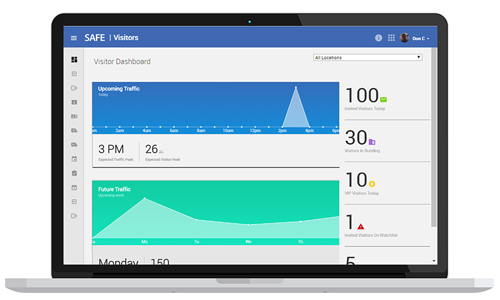Managing access privileges for hospital visitors from the time they enter the facility until the time they checkout is a significant challenge for healthcare institutions. There are numerous reasons for this, relating to the physical layout of hospitals, the complexities of the population of individuals within the facilities at any given time, and industry compliance requirements.
The traditional visitor management system used in hospitals is standalone, not designed to serve multiple lobbies within the same location or several locations, and often serves merely as badging systems with limited tracking capabilities. Moreover, they often provide only partial or no integration with Healthcare Information Management systems, which restricts the ability for the visitor management solution to correlate with patient status and location in real-time.
However, now with the development of centralized visitor identity management (VIM) software, healthcare organizations have a solution that can address their specific challenges and processes.
Adding Depth to Hospital Security
Requiring visitors to manually sign in and out or wear a visitor badge is a difficult to almost impossible to enforce. Now with centralized VIM systems healthcare organizations can create an identity for every individual who has reason to be on the premises and gives hospital security management the ability to track visitors as well as record all visitor activity. The identity data can also provide visitor management operators with the ability to restrict who has the authority to visit a patient via a family and friends list.
In addition to providing security with the ability to track visitors, out-of-the-box workflows automate a wide range of security operations, reducing errors and making information management more precise. Now, time-consuming and inefficient processes such as issuing ID badges or assigning access privileges across multiple physical access control systems can be streamlined. Access can be granted for specific types (i.e., family, guardian, etc.) and lengths of visits (overnight, multi-day, etc.) and the information can remain in the system for return visitors. In all cases, access cards and badges are automatically disabled by the system after visiting hours or when access permission has expired.
Meeting Regulatory Requirements
Centralized VIM solutions can also enable hospital management to perform important identity and access control functions in the context of meeting regulatory requirements.
Centralized VIM software can help ease pain points by automating, in real-time, compliance initiatives. When VIM software is integrated with a patient’s electronic health record (EHR), the combined information provides a more holistic view for the medical professional. All information pertaining to patient identity, such as visitors, dietary restrictions, medical attendees and so on, are tied together under policy-based workflows.
Additionally, the visitor management solution can be integrated with other hospital systems (HR, PACS, parking and other physical assets) for added physical safety, as well as with external databases such as watch lists, to ensure thorough background vetting.
Organization-Wide Management
Lastly, VIM software systems can streamline time-consuming and inefficient processes from issuing ID badges to managing databases to assigning access privileges across multiple physical access control systems. For instance, when a hospital is affiliated with or physically part of a University School of Medicine, various access levels and permissions can be programmed on to a single ID badge for physicians and students. In addition, any activity, event or status at any point in the identity lifecycle is reportable and auditable. If vulnerability is identified, hospital administrators can review and take the necessary action to rectify procedures or activities.
Centralized visitor management is also ideal for multi-facility environments because it easily enables hospital administrators to expand parameters for permissions, integrate new databases, and increase interoperability with other security and operational systems across the organization. Some of these expanded functions include web-based visitor pre-registration by hosts; implementation of pre-defined policies for visitor and physical access approval, signed NDA verification, email notifications, reminders and escalations; management of unscheduled visitors, provisioning Wi-Fi access, assigning an escort to visitors; management of vehicle details and allotment of parking permits to visitors.
The Solution
Quantum Secure’s SAFE for Healthcare Intelligent Patient-Visitor Management solution provides healthcare organizations with the ability to manage all of the physical identities in their facilities, meet compliance mandates, and ensure timely and secure access while simultaneously lowering operating costs and risk.
Click here to learn how SAFE for Healthcare can transform your organization.








